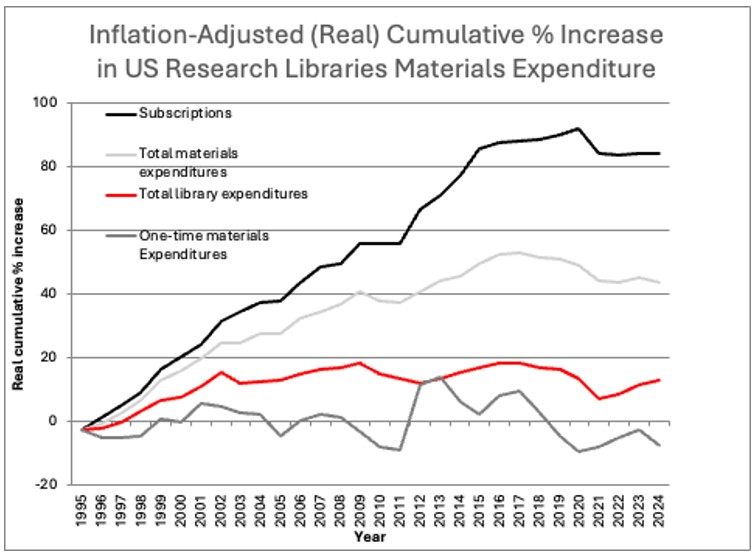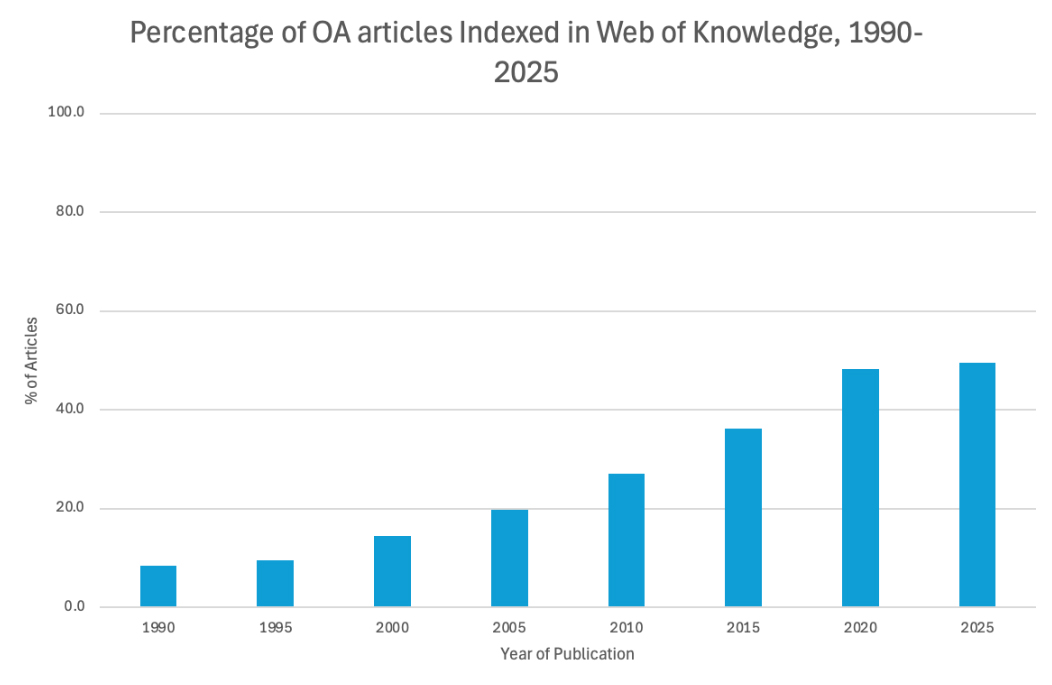We find ourselves in a difficult financial moment, one shaped by current economic constraints as well as the historical inflationary costs of academic journals. For decades, the subscription prices for these journals have risen at a rate far exceeding the general inflation rate, or Consumer Price Index (CPI). For example, one study found that journal prices increased by 215% over a 16-year period, while the CPI rose by only 64% during the same time. This unsustainable increase in costs, often called the "serials crisis," is largely driven by a small number of commercial publishers who have significant market power.

“Inflation Calculator.” U.S. Official Inflation Data, Alioth Finance, 15 Aug. 2025, https://www.officialdata.org/
ARL Statistics, 20 August 2025, https://www.arlstatistics.org/
Within that context, University-wide financial constraints are forcing us to make difficult decisions, and we are strategically re-evaluating our resources. We are using data on cost, usage, content overlap, and the availability of freely accessible content, to identify and cancel lower-use subscriptions.
Here you will find a list of titles slated for nonrenewal.
Our collection development is guided by several key principles. Our priorities are to align our collection with the current and future research and teaching needs of the university, complement our existing special and archival collections, and build on areas of existing collection strengths. We leverage both regional and national collaborations to build, share, and preserve collective collections. For instance, we participate in several consortia that support purchasing, collaborative or shared collection development (EAST and Hathi Trust, CRL) and enable resource sharing (e.g., PALCI EZBorrow, OCLC Interlibrary Loan, or RapidILL).
At the same time, we are strengthening our support for open access (OA) as a means of promoting a more balanced and sustainable publishing environment. For instance, we negotiated agreements with 17 major journal publishers to cover APC charges for Pitt authors and we invest in new formats of scholarly publishing that prioritize open access. OA reduces dependence on costly subscription models and eliminates paywalls for readers and is a net benefit to society. By investing in OA, we aim to encourage publishing practices that align more closely with the academic community’s values - equitable access to scholarship, transparency in costs, and responsible use of library resources.

We want to assure you that even with these changes, our commitment to providing access to the materials you need remains steadfast. We will get you individual items that we do not own through our resource sharing service (ILL) or requests for purchase. as quickly as possible. We also encourage you to speak with your department liaison librarian to discuss your needs.




